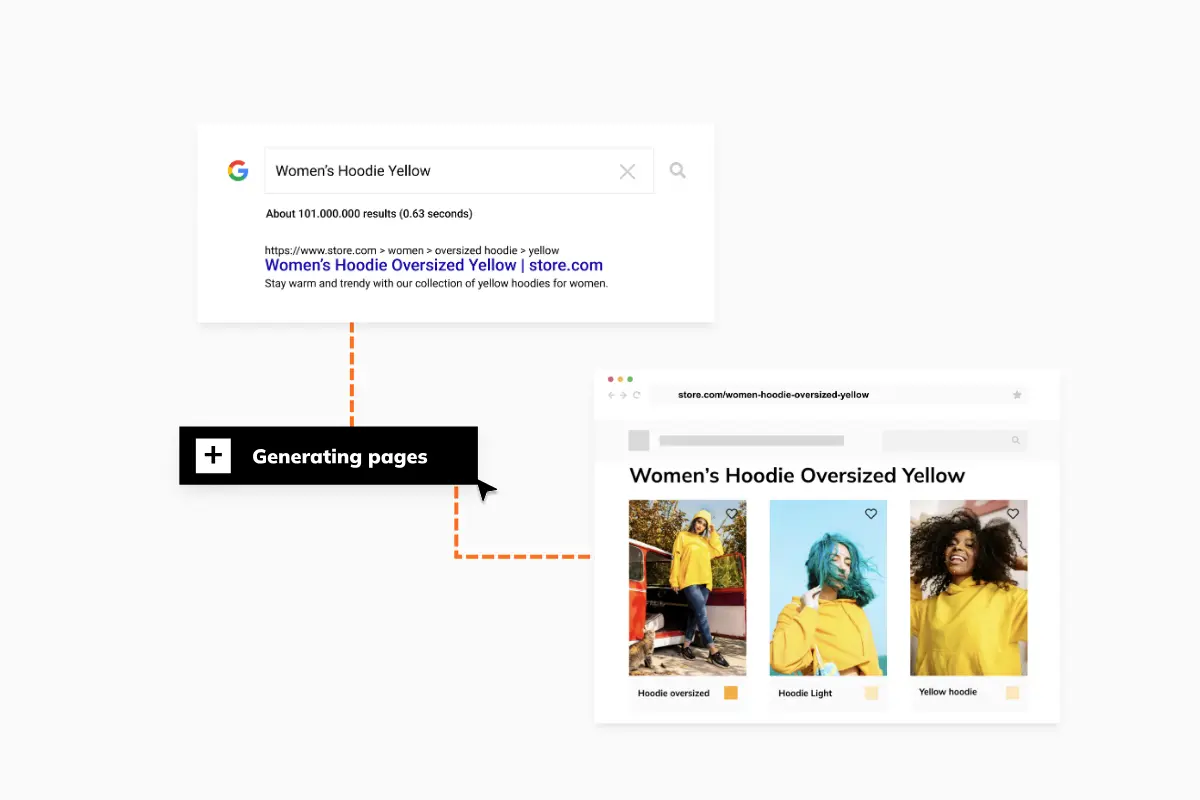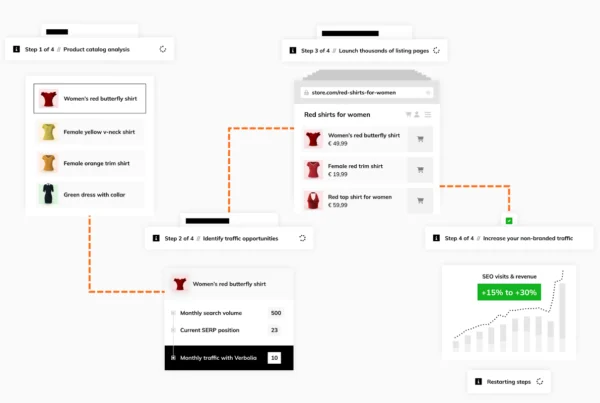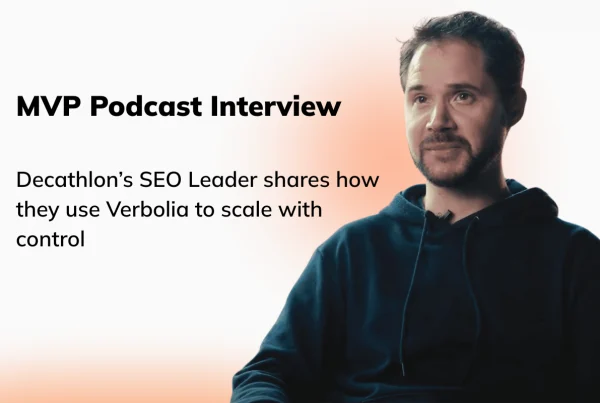Programmatic SEO: scale long-tail traffic without scaling your team
Estimated reading time: 7 minutes

In the world of SEO, everyone talks about ranking for high-volume keywords. But what about the thousands of niche, intent-rich queries your customers are searching for every day?
That’s where programmatic SEO comes in.
Let’s break down why it’s one of the most powerful strategies to scale SEO without scaling your team.
Programmatic SEO is an approach that lets you generate and publish thousands of SEO-optimized pages in a highly automated way.
It’s built around one idea: creating a large number of pages, each targeting a very specific long-tail keyword.
But it’s not just about volume: it’s about structured, intent-driven content that matches exactly what users are searching for.
Why is it called “programmatic”?
Simple: because you have to program it.
Programmatic SEO involves building a system (often through automation or a specialized tool) to generate pages dynamically, usually by combining structured elements.
You’re not writing every page by hand. You’re creating templates and using data to scale content creation efficiently, without sacrificing relevance.
When does programmatic SEO work best?
E-commerce is an ideal use case—especially for sites with large product catalogs. You can combine product type, brand, size, color, and occasion into structured, long-tail keywords and corresponding listing pages.
This strategy also shines in industries where search behavior is highly structured and repeatable. Think:
- Job boards: Keywords like “marketing jobs in Chicago full-time” can be broken down into variables, including job title, city, and job type.
- Real estate: “2-bedroom apartments for rent in Brooklyn” combines property type, size, status, and location.
- Travel: “Hotels near the Eiffel Tower” or “Things to do in Kyoto in November” are structured around landmarks, cities, and dates.
In each case, the keyword structure informs the page structure, making it easy to scale content programmatically.
How it works (in practice)
Let’s say you’re running a job board. You might generate keyword combinations like:
- Digital Marketing Jobs in Paris Full-Time
- Remote Graphic Design Jobs Entry Level
- Senior Data Analyst Jobs in Berlin
Each keyword combination becomes a page. And because each element (job title, location, contract type) is structured, you can dynamically create page content around it:
- A short description of the job title
- Context about the city or location
- Related listings pulled automatically
This same logic applies across other verticals, such as real estate, e-commerce, and travel.
The secret: content + structure
With programmatic SEO, you’re not just generating URLs. You’re crafting pages that:
- Match specific user intent
- Include dynamic, relevant content
- Are structured for bots and meaningful for users
- Scale without increasing editorial workload
The structured keyword becomes a blueprint. It gives you both the target query and the outline for the page.
Why should you care?
Because modern SEO isn’t just about ranking for a few head terms, it’s about owning the long tail—the thousands of keywords with low competition and high intent.
And unless you have a massive editorial team, you won’t get there manually.
Programmatic SEO gives you a smart, scalable solution to get there fast—especially when paired with a programmatic SEO tool like Verbolia’s Vpage, built specifically for long-tail automation.
About The Author
How can Verbolia help your e-commerce platform.


